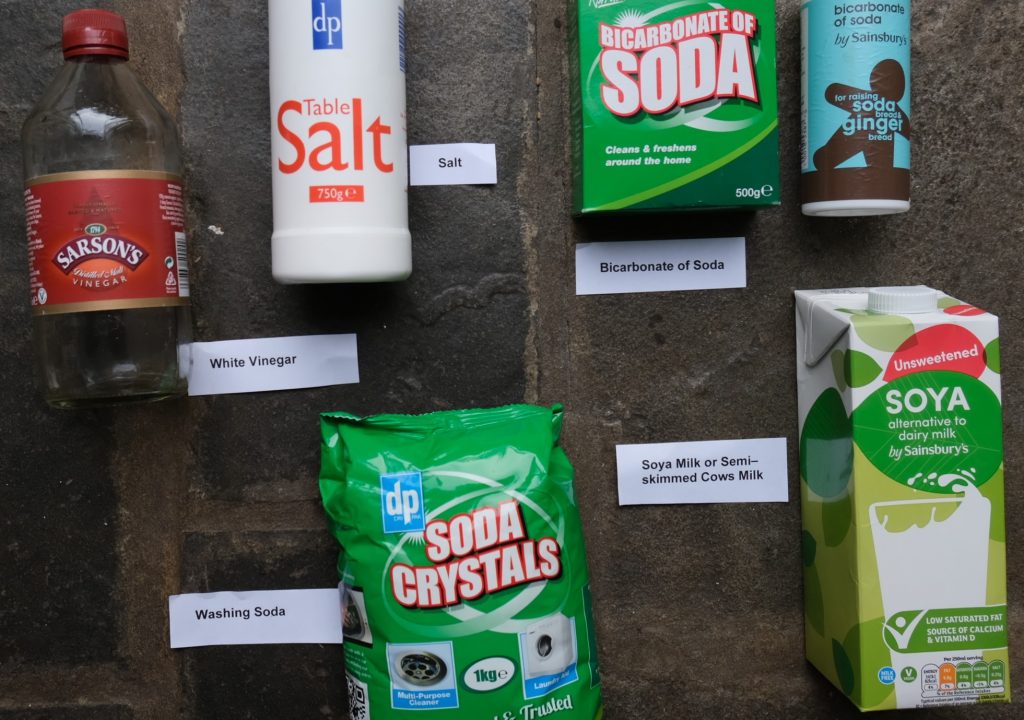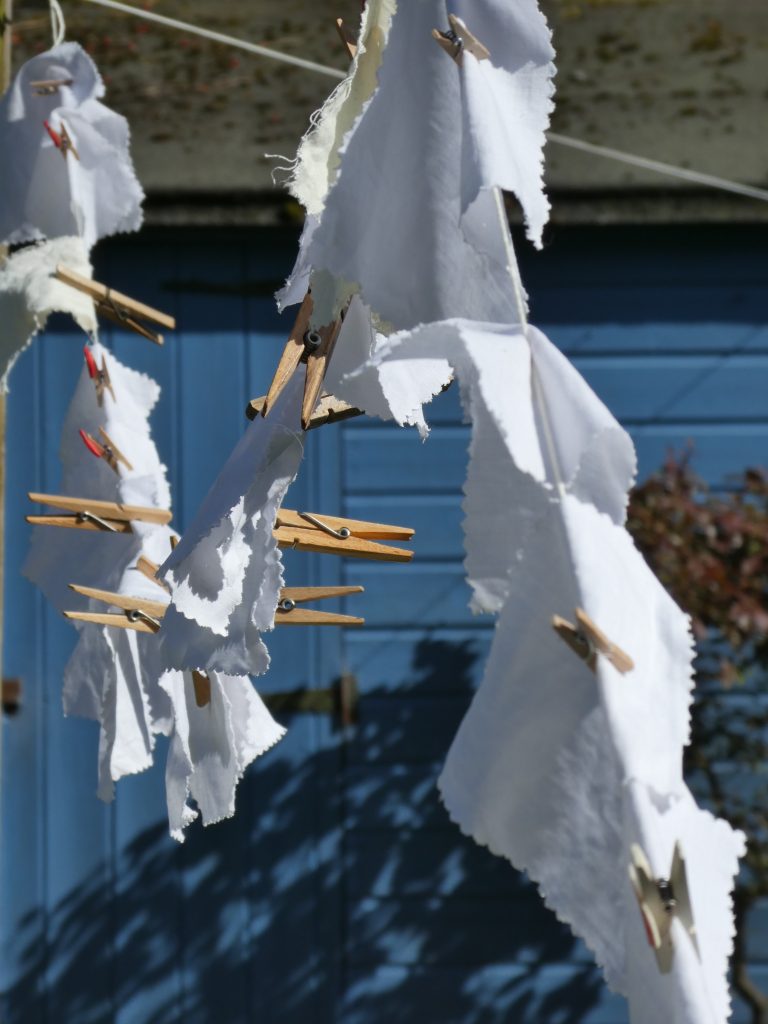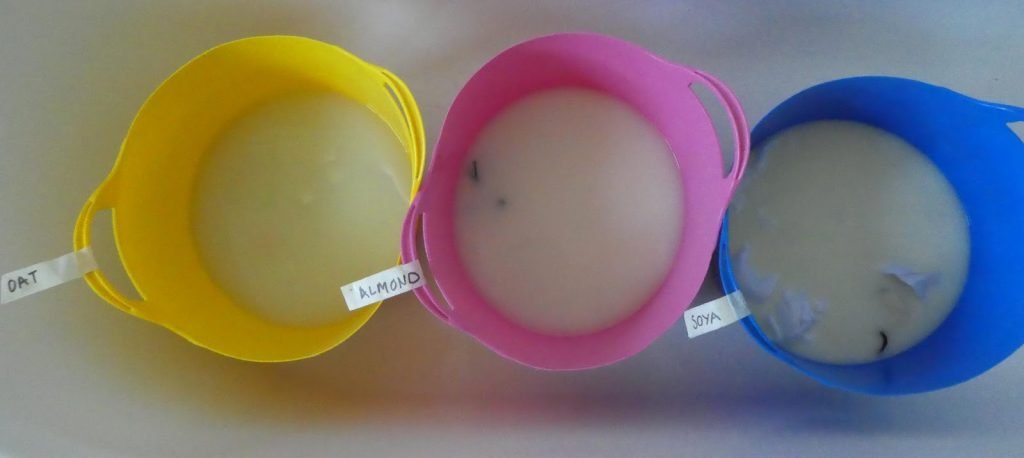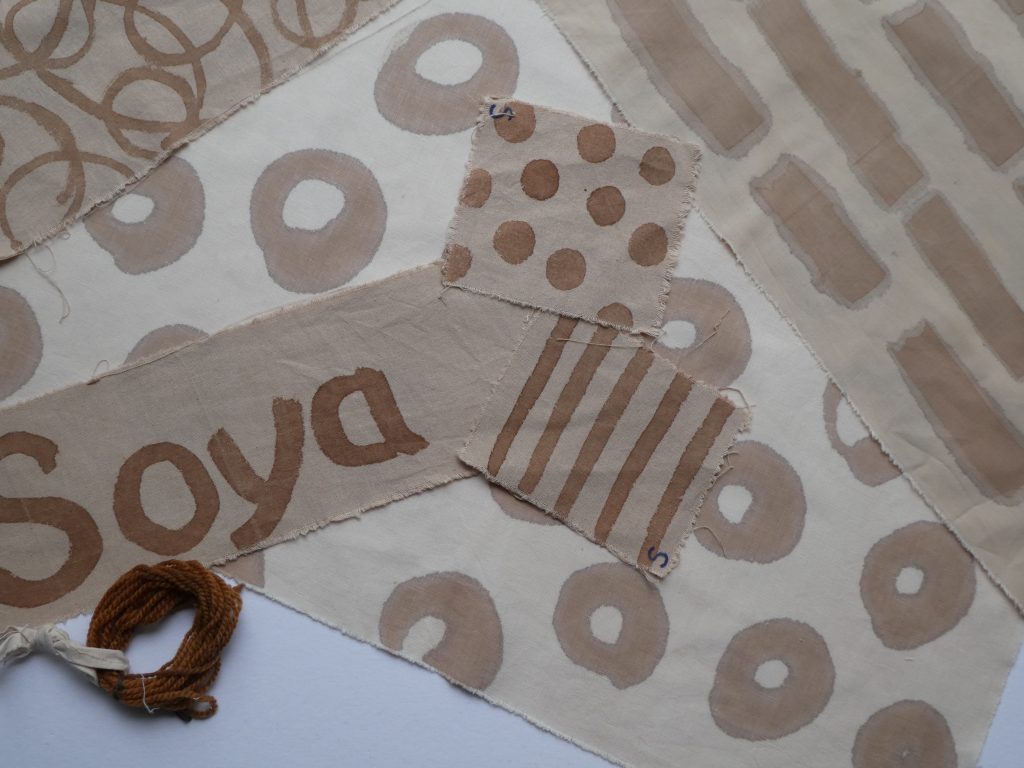
Scouring
Before beginning the dyeing process it is essential to vigorously clean the yarn or fibre as excessive oil or fabric conditioners might inhibit the absorption of dye.
- The best result is obtained through lengthy stove-top boiling using sodium carbonate, available from natural dyeing suppliers.
- It is also possible to achieve good results in a washing machine, set at 60 degrees, using washing soda/crystals, which are widely available and contain sodium carbonate – use 2 scoops per wash and sprinkle directly over the cloth or fibre in the drum.
- Wool or delicate fibres can be successfully cleaned by gentle simmering, on the stove top, with the addition of an environmentally friendly washing up liquid, using about 15ml per 2 litres of water.
- Wool requires delicate handling to avoid felting or shrinkage. It is possible to heat wool to high temperature if it is raised and cooled very slowly and gently. This applies to the cleaning and dyeing process.

Mordants and mordanting
Once your fibre or fabric is completely clean it is necessary to prepare it to absorb the dye and retain the colour. Whilst natural textile fibre will readily accept colour it is susceptible to fade in sunlight or aggressive washing. Mordants are a way to fix the colour
- Metal salts, such as Alum and Aluminium Acetate are commonly used by natural dyers. However, it is also possible to make your own mordants from grown or foraged ingredients including acorns, rhubarb root and gallnuts from oak trees.
Different mordants can result in widely varied results and experimentation is very worthwhile.
Simple fixers
When starting out with natural dyeing it is useful to try simple and easy fixatives. For example salt and white vinegar can be used to prepare fabrics – an advantage in a domestic setting where caution should be taken and potentially toxic materials avoided.
- Salt can be used to prepare fibres to be dyed in berries at a ratio of 1:16 salt to water.
For example – fill a measuring jug with salt up to the 200ml mark and add to a large pan. Then add 3.2 Litres of water.
- For vegetable based dyes the ratio is 1:4 white vinegar to water.
For example measure 750ml of white vinegar and add to large pan. Then add 3 Litres of water.
Method
If using salt, stir whilst liquid is heating, until salt is dissolved, before adding cloth. For either salt or vinegar – simmer cloth, item of clothing or fibre for 1 hour using the correct ratio above. The item can either be dried for later use, or added straight into the dye bath.
Using milk to prepare cloth or fibre

A range of both plant based and animal milk can be used to help the bonding of dye to fibre. Although technically milk is not a mordant, it is useful in the preparation of plant based materials as it coats the fibres in a layer of protein and helps the fibres soak up a deeper colour.
To prepare fibres in milk
- Mix1 litre of chosen milk with 5 litres of water in a large bucket. If using cows milk, choose semi skimmed as full fat milk risks leaving a greasy residue on the cloth.
- Soak approximately 500g of yarn or cloth in the liquid for about 12 hrs. • Squeeze out or spin the excess milk and hang to dry.
- Then dip the yarn or cloth in the remaining liquid and remove immediately.
- Then, as before, squeeze or spin and hang to dry. Repeat this twice more – so you have 4 layers of milk on the fibre.
• Many suggest that you should leave the dry cloth for at least a week to mature but I have regularly used cloth, prepared in this way, as soon as it has dried with very good results.
Creating patterns on cloth with milk
A quick way to see the impact that milk has on cloth is to use it paint patterns. To do this –
- Mix up 2 spoons of milk with 3 spoons of water.
- Use a brush or even your finger to make dots or stripes on a piece of clean white cloth.
- When the cloth is dry make up a dye using 2 teabags to 500ml of water and allow to brew for 30 minutes
- Submerge painted and dried piece of cloth for about 20 minutes, then remove the cloth and allow to dry.
You should clearly see the painted pattern.

Notes prepared by Katrina Barnish for Sewing Café Lancaster
sewingcafelancaster@gmail.com